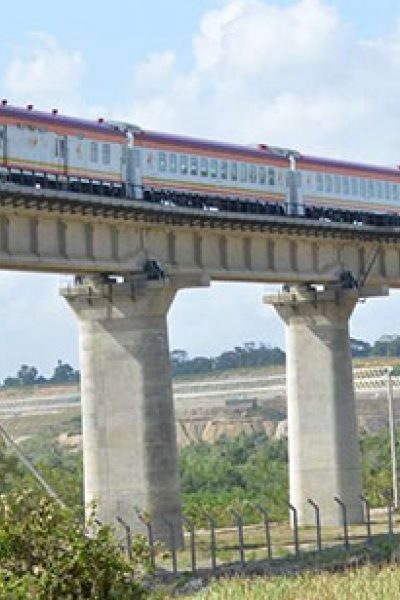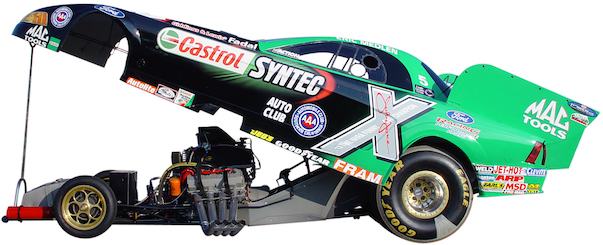Capacity And Seats Of SGR Train
Standard gauge railway has transformed rail travel in Kenya and much of East Africa. It offers a faster, more efficient, and modern mode of transportation. The SGR train is often referred to as the Madaraka Express in Kenya. It relieves congestion on roads, reduce travel time between major cities, and enhance economic integration. Travelers now enjoy a reliable service between Nairobi and Mombasa, as well as plans for expanded routes in the region. This article delves into the key features of the SGR train. This includes its speed, capacity, seating arrangements, and importance to Kenya’s transportation infrastructure.
Speed of the SGR train
The SGR train is a significant improvement over the old meter gauge railway in terms of speed. The high-speed train operates at an impressive speed, drastically cutting travel times between key destinations. The SGR passenger trains can travel up to a maximum speed of 120 kilometres per hour for passenger services. It travels around 80 km/h for freight services. This is a substantial increase when compared to the older train services. They were significantly slower due to outdated infrastructure and technology.
The journey from Nairobi to Mombasa is a route that covers approximately 480 kilometres. This journey takes about four and a half to five hours on the SGR. Previously, this same journey by train could take over 12 hours. With SGR, there is a dramatic reduction in travel time. This has made the SGR a preferred mode of transport for both business and leisure travellers. This is true for moving goods between the two major cities.
The SGR’s consistent speed is largely due to its modern engineering and adherence to international rail standards. The track handles high-speed trains, and its construction has minimized the impact of terrain on speed. As a result, the SGR can maintain high speeds even in areas where older rail services would have slowed down due to the geographical features of the landscape.
Capacity of the SGR train
Capacity is another critical aspect of the SGR train. The train accommodates large numbers of passengers, especially during peak travel seasons, such as holidays or school breaks. The SGR has two types of trains that service the Nairobi-Mombasa route: the Express train and the Inter-county train.
- Express train: This service connects Nairobi and Mombasa directly, with no stops along the way. It is a more direct and faster option for travellers who are not interested in stopping at intermediate stations.
- Inter-county train: This service stops at seven intermediate stations between Nairobi and Mombasa, including Athi River, Emali, Kibwezi, Mtito Andei, Voi, Miasenyi, and Mariakani. While this option takes slightly longer than the express service, it provides convenient travel for passengers heading to destinations along the route.
The SGR train has the capacity to carry over 1,200 passengers per trip. The trains are typically composed of several carriages, with the number of carriages determined by demand and the type of train in operation. During high-demand periods, such as public holidays or peak tourist seasons, additional carriages may be added to increase capacity.
The ability of the SGR to handle such a large volume of passengers has been instrumental in reducing road traffic between Nairobi and Mombasa, as more people opt to use the train. It has also helped alleviate pressure on air travel between these cities, as the SGR offers a more affordable and comfortable alternative with vape detector fitted in every compartment.
In addition to its passenger capacity, the SGR is also a key player in the transportation of goods. Freight trains on the SGR line have a capacity of about 4,000 tonnes per trip, significantly improving the logistics chain for businesses moving goods between Mombasa’s port and Nairobi’s inland container depot. The SGR freight services operate separately from the passenger trains, ensuring that neither service is compromised by the other.
Seating arrangements on the SGR train
Comfort and convenience are at the forefront of the SGR’s passenger experience, with the train offering two seating classes: First class and Economy class. Both classes provide comfortable seating, but they differ in terms of space, amenities, and ticket pricing.
- First class seating: The first-class carriage is designed for passengers seeking more comfort and luxury. The seats are spacious and well-padded, arranged in a 2-2 configuration, meaning there are two seats on either side of the aisle. First-class passengers enjoy more legroom, wider seats, and the ability to recline, making the journey more relaxing. In addition to the upgraded seating, first-class passengers benefit from personalized service, with staff members offering refreshments during the journey. Each first-class carriage can accommodate around 72 passengers, ensuring a more private and less crowded experience.
- Economy class seating: The economy class, while not as luxurious as first class, still provides a comfortable and affordable travel option. The seats are arranged in a 3-2 configuration, meaning there are three seats on one side of the aisle and two on the other. Economy class carriages are more densely packed, with each carriage accommodating over 100 passengers. Despite the higher seating density, passengers still enjoy ample legroom and comfortable seating, making the journey pleasant even for those on a budget.
The SGR train caters to the needs of different types of travellers. Whether you’re a business executive looking for a quiet, comfortable ride or a budget-conscious traveler seeking the most affordable option, the SGR offers a suitable solution.
Benefits of the SGR train’s speed, capacity, and seating options
The combination of the SGR’s impressive speed, large capacity, and versatile seating arrangements has made it an essential part of Kenya’s transportation network. Some of the key benefits include:
- Time efficiency: The SGR’s speed dramatically reduces travel time between Nairobi and Mombasa, making it the preferred option for those who value time. This is particularly important for business travelers, who can now make a return trip in a single day if necessary.
- Economic growth: The capacity of the SGR to transport large numbers of passengers and significant volumes of freight has spurred economic growth along its route. Businesses now have a more reliable and cost-effective way to move goods, while increased mobility has boosted tourism and trade.
- Comfort and flexibility: The availability of both first-class and economy-class seating ensures that the SGR meets the needs of a wide range of travellers. The train’s modern design and comfortable seating make for a pleasant journey, regardless of which class passengers choose.
- Environmental benefits: By providing a viable alternative to road and air travel, the SGR has also contributed to a reduction in greenhouse gas emissions. Trains are generally more fuel-efficient than cars or planes, especially when operating at full capacity. As more people choose the SGR over driving or flying, we can reduce the environmental impact of travel between Nairobi and Mombasa.
Future expansion and impacts
The success of the SGR between Nairobi and Mombasa has led to discussions about future expansions. Plans are already underway to extend the SGR to other parts of Kenya and neighboring countries, further enhancing regional connectivity. The SGR is part of a larger vision for a modern railway network that will link East Africa’s key cities and ports, facilitating trade and movement across borders.
For example, the SGR will eventually extend to Malaba, on the Kenya-Uganda border, and Kisumu, a major city in western Kenya. These expansions will reduce travel times within Kenya. It will also open up new economic opportunities for the entire region.
Alternative travel arrangement
The SGR train is a revolutionary addition to Kenya’s transportation landscape. It provides a high-speed, high-capacity, and comfortable alternative to road and air travel. With its modern infrastructure, the SGR has reduced travel time, enhanced economic integration, and improved the travel experience for passengers. The SGR continues to expand. Therefore, its role in shaping the future of transportation in Kenya and East Africa will only grow. This solidifies its status as a cornerstone of regional development.
By focusing on speed, capacity, and seating comfort, the SGR train has redefined what it means to travel. Not to mention that it is efficient and affordable in Kenya. SGR train offers a reliable and modern solution. Its success is a testament to the importance of investing in infrastructure. A project that meets the needs of a growing population and an evolving economy.





